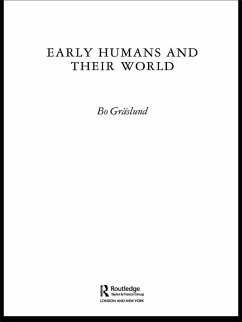This book presents a breadth of scholarship not found in previous books on the evolution of early hominids. This wide-ranging account creates an accessible introduction to the development of humankind, suitable for students at all levels and the interested non-specialist. The re-evaluation of existing conventions and their replacement with convincing alternatives provide the basis for the study of early hominid evolution for years to come.
The author combines biological research on early human origins and evolution, from the split with the apes some six million years ago to the rise of early modern humans. He focuses on how early humans evolved, lived and organized nhemselves, while signifying the relevance of that advancement for the understanding of modern social life.
The deconstruction of current thought on early hominid evolution continues as the author applies critical scrutiny to the biological theory of kin selection and its relevance for the evolution of human morality and the behaviors of inbreeding avoidance and infanticide. He also examines other key issues such as the origin of cognition, spoken language, morality and typical human sexuality, as well as diet and population density.
In a discussion on the lack of coherent evolutionary explanation of bipedalism the author proposes a possible semi-aquatic environment for our ancestors as an alternative to the widely held '"savannah hypothesis." He gives further consideration to the evolutionary instruments used in creating bipedalism, as well as the modern human skull and face and the special human traits of curiosity and creativity.
The author accesses research by the world's leading scholars of earlyhominid evolution and primate behavior to create a landmark exploration of human origins.
The author combines biological research on early human origins and evolution, from the split with the apes some six million years ago to the rise of early modern humans. He focuses on how early humans evolved, lived and organized nhemselves, while signifying the relevance of that advancement for the understanding of modern social life.
The deconstruction of current thought on early hominid evolution continues as the author applies critical scrutiny to the biological theory of kin selection and its relevance for the evolution of human morality and the behaviors of inbreeding avoidance and infanticide. He also examines other key issues such as the origin of cognition, spoken language, morality and typical human sexuality, as well as diet and population density.
In a discussion on the lack of coherent evolutionary explanation of bipedalism the author proposes a possible semi-aquatic environment for our ancestors as an alternative to the widely held '"savannah hypothesis." He gives further consideration to the evolutionary instruments used in creating bipedalism, as well as the modern human skull and face and the special human traits of curiosity and creativity.
The author accesses research by the world's leading scholars of earlyhominid evolution and primate behavior to create a landmark exploration of human origins.
Dieser Download kann aus rechtlichen Gründen nur mit Rechnungsadresse in A, B, BG, CY, CZ, D, DK, EW, E, FIN, F, GR, HR, H, IRL, I, LT, L, LR, M, NL, PL, P, R, S, SLO, SK ausgeliefert werden.


